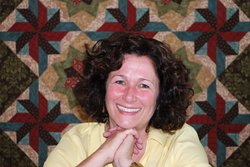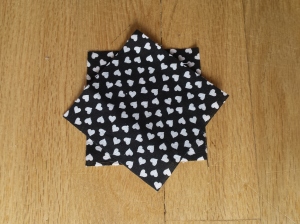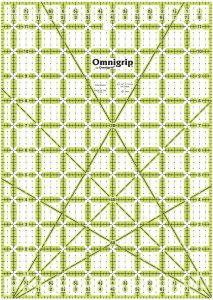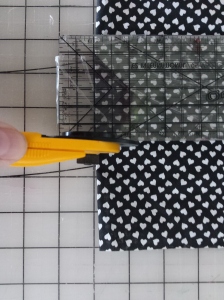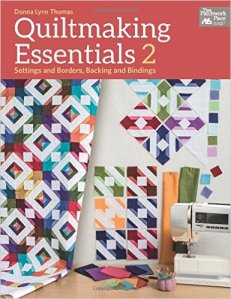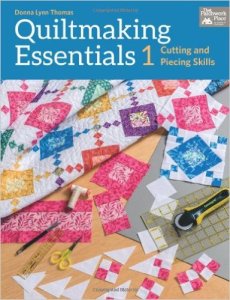How is that going to work out? Just fine, actually.
That is, if you have the correct tool. Not talking modern art quilts. These are traditional “on-point” beauties. Where the square is turned 45 degrees to become a diamond.
And that is where the nightmare always began until an out-of-the-box quilter found a short cut or hack, if you will. I like to think of it as thinking like a girl and not an algebra teacher.
I can imagine Donna Lynn Thomas cocking her head to mentally change a square into a diamond. What is the magic, she must have thought, that makes it stupid simple to tame the beast?
After all, a square IS a diamond–turned.
Turning the square does not change its measurements at all–except for the seamstress. Hummmm….
Many a designer has struggled with this conundrum. Many have shared the obvious solution of turning to the calculator.
Wiki How explains it in 7 very detailed steps involving square roots (how fitting!) and triangle dynamics. If you fell asleep in either algebra or geometry, you might not want to visit their info page.
Even when you come up with the right answer, there is no such marking on any ruler you own, so the only option is to guess or fudge. It is not at all precise. And any quilter knows that imprecise measuring….. Well, you know where that goes. Never mind.
Perhaps Donna Lynn could not find a calculator that morning. Maybe she cheated some how, but luckily for us, the result was a new ruler.
Ms. Thomas’ multi-purpose ruler is very smart. Not only does it measure the width of the diamond, it adds in the quarter inch seam allowance. Because, really, how much fun would it be to have to add a precise quarter inch to a point? We certainly do not want to go back to guesswork and fudging the numbers–the exact situation we are trying to escape!
Who would ever guess that “no-math” could trump complicated math for getting to the exactly right measurement. Donna Lynn Thomas gave us out-of-the-box American ingenuity for our all-American quilting joy. If you love the “on-point” look but have been holding back from trying it, please try one of Donna Lynn’s books.
I have selected On-Point Patchwork because of its variety and the fact that you can preview so many pages before you buy. One or more pattern is sure to catch your eye and fire your imagination. However, all Ms. Thomas’ books have easy-to-follow directions. Choose one that is right for you.
And finally, I would be remiss if I did not personally thank Ms. Thomas for generously taking the time to answer my questions about the on-point ruler.
Not long after her visit to Cottonwood Quilt Guild as a speaker (see my previous post), I tried to sort out exactly how her ruler worked, not having purchased it yet. After several emails, she figured out that I was cutting fabric on the right side of my standard ruler instead of putting the ruler on top of the fabric I intended to use.
She also challenged me to turn my cutting pad over until I had broken the habit of depending on it instead of the ruler. A very simple bad habit was holding me back. This is the reason I encourage quilters to take a beginner class, either in a group or with a book in your own sewing room. You don’t know what you don’t know. You know?
Whether you are a beginner or experienced quilter, please consider either taking a beginner’s class at your local quilt shop or tutor yourself with Ms. Thomas’ easy directions and inspiring designs. Quilting Essentials II is appropriate for all levels. Or try the Quilting Essentials book one, also available at Amazon.


